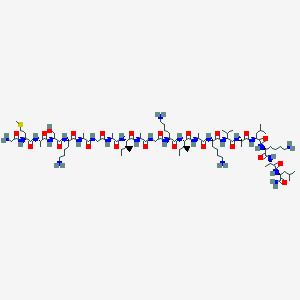
-
PGLa TFA
- names:
PGLa TFA
- CAS号:
102068-15-5
MDL Number: MFCD00273542 - MF(分子式): C88H162N26O22S MW(分子量): 1968.45
- EINECS: Reaxys Number:
- Pubchem ID:16131010 Brand:BIOFOUNT
| 货品编码 | 规格 | 纯度 | 价格 (¥) | 现价(¥) | 特价(¥) | 库存描述 | 数量 | 总计 (¥) |
|---|---|---|---|---|---|---|---|---|
| YZM000407-500μg | 500μg | >97% | ¥ 2152.00 | ¥ 2152.00 | 1-3days | ¥ 0.00 |
| 中文别名 | PGLa(102068-15-5);聚乳酸; |
| 英文别名 | PGLa(102068-15-5);(4-24)-PLY(a);GLa peptide;peptide-Gly-Leu-amide;PGL(a);PGLA;PYL(a), 4-24-;GLY-MET-ALA-SER-LYS-ALA-GLY-ALA-ILE-ALA-GLY-LYS-ILE-ALA-LYS-VAL-ALA-LEU-LYS-ALA-LEU-NH2;:peptide-Gly-Leu-amide;L-Leucinamide,glycyl-L-methionyl-L-alanyl-L-seryl-L-lysyl-L-alanylglycyl-L-alanyl-L-isoleucyl-L-alanylglycyl-L-lysyl-L-isolChemicalbookeucyl-L-alanyl-L-lysyl-L-valyl-L-alanyl-L-leucyl-L-lysyl-L-alanyl-;741:PN:US20050058603SEQID:736claimedprotein;MSI499;PGLaionchannel-formingpeptide; |
| CAS号 | 102068-15-5 |
| Inchi | InChI=1S/C23H30ClN3O.2ClH/c1-5-27(6-2)13-7-8-16(3)25-23-19-11-9-17(24)14-22(19)26-21-12-10-18(28-4)15-20(21)23;;/h9-12,14-16H,5-8,13H2,1-4H3,(H,25,26);2*1H/t16-;;/m0../s1 |
| InchiKey | UDKVBVICMUEIKS-SQKCAUCHSA-N |
| 分子式 Formula | C88H162N26O22S |
| 分子量 Molecular Weight | 1968.45 |
| 溶解度Solubility | |
| 性状 | Solid |
| 储藏条件 Storage conditions | 2-8°C,请根据产品建议的存储条件进行存储,Please store the product under the recommended condition sin the description. |
聚乳酸(PGLa,102068-15-5)实验注意事项:
1.实验前需戴好防护眼镜,穿戴防护服和口罩,佩戴手套,避免与皮肤接触。
2.实验过程中如遇到有毒或者刺激性物质及有害物质产生,必要时实验操作需要手套箱内完成以免对实验人员造成伤害
3.实验后产生的废弃物需分类存储,并交于专业生物废气物处理公司处理,以免造成环境污染Experimental considerations:
1. Wear protective glasses, protective clothing and masks, gloves, and avoid contact with the skin during the experiment.
2. The waste generated after the experiment needs to be stored separately, and handed over to a professional biological waste gas treatment company to avoid environmental pollution.
Tags:PGLa试剂,PGLa杂质,PGLa中间体,PGLa合成,PGLa密度,PGLa溶解度,PGLa旋光度,PGLa闪点,PGLa熔点,PGLa购买,

| 产品说明 | 聚乳酸(PGLa,102068-15-5)是一种含21个残基的抗菌肽,PGLa是在蛙皮及其分泌性发现的抗菌肽麦角菌素家族的成员。 |
| Introduction | 聚乳酸(PGLa,102068-15-5)is an antimicrobial peptide. PGLa is known to be bacteriostatic against both Gramositive and Gramegative bacteria. |
| Application1 | |
| Application2 | |
| Application3 |
1、PGLa是一种由21个氨基酸组成的抗菌肽(AMP),形成α-螺旋二级结构;具有多种抗菌活性,包括针对真菌,病毒,革兰氏阴性和革兰氏阳性细菌以及癌细胞的活性。
3、PGLA是对革兰氏阳性和革兰氏阴性细菌具有64的MIC值和32 mg / L的分别对抑菌金黄色葡萄球菌和大肠杆菌有抑制作用。
4、PGLa是抗菌肽,PGLa的氨基酸序列是Gly-Met-Ala-Ser-Lys-Ala-G ly-Ala-Ile-Ala-Gly-Lys-Il e-Ala-Lys-Val-Ala-Leu-Lys -Ala-Leu-NH 2
PGLa是最初从青蛙中分离的阳离子抗微生物肽(AM P)。它已被证明具有抗菌,抗降解和抗病毒药作用。它可用于研究源自PGLa和非洲爪蟾多核胃粘膜细胞的新肽片段。
5、PGLa的前体是蛙皮素和爪蟾肽。PGLa对革兰氏阴性细菌的作用机制是破坏细胞脂质双层膜。PGLa可用于诱导脂双层和细菌细胞膜中的跨膜孔形成。PGLa与蛙皮素2结合使用可产生协同效应。
| 警示图 | |
| 危险性 | warning |
| 危险性警示 | Not available |
| 安全声明 | H303吞入可能有害+H313皮肤接触可能有害+H2413吸入可能对身体有害 |
| 安全防护 | P264处理后彻底清洗+P280戴防护手套/穿防护服/戴防护眼罩/戴防护面具+P305如果进入眼睛+P351用水小心冲洗几分钟+P338取出隐形眼镜(如果有)并且易于操作,继续冲洗+P337如果眼睛刺激持续+P2393获得医疗建议/护理 |
| 备注 | 实验过程中防止吸入、食入,做好安全防护 |
| 1. Radchenko DS, et al. Does a methionine-to-norleucine substitution in PGLa influence peptide-membrane interactions? Biochim Biophys Acta. 2016 Sep;1858(9):2019-27. |
| Radchenko DS, et al. Does a methionine-to-norleucine substitution in PGLa influence peptide-membrane interactions? Biochim Biophys Acta. 2016 Sep;1858(9):2019-27. |
| Novel peptide fragments originating from PGLa and the caerulein and xenopsin precursors from Xenopus laevis PMID 3957928; The Journal of biological chemistry 1986 Apr; 261(12):5341-9 Name matches: xen |
| A comparison of host-defense peptides in skin secretions of female Xenopus laevis × Xenopus borealis and X. borealis × X. laevis F1 hybrids PMID 23624316; Peptides 2013 Jul; 45(?):1-8 Name matches: xe |
| Host-defense peptides in skin secretions of African clawed frogs (Xenopodinae, Pipidae) PMID 22036891; General and comparative endocrinology 2012 May; 176(3):513-8 (Review Article) Name matches: leuci |
1、gainin 2 and PGLa in Bacterial Membrane Mimics I: Peptide-Peptide and Lipid-Peptide Interactions
Michael Pachler 1, Ivo Kabelka 2, Marie-Sousai Appavou 3, Karl Lohner 1, Robert Vácha 4, Georg Pabst
Abstract We addressed the onset of synergistic activity of the two well-studied antimicrobial peptides magainin 2 (MG2a) and PGLa using lipid-only mimics of Gram-negative cytoplasmic membranes. Specifically, we coupled a joint analysis of small-angle x-ray and neutron scattering experiments on fully hydrated lipid vesicles in the presence of MG2a and L18W-PGLa to all-atom and coarse-grained molecular dynamics simulations. In agreement with previous studies, both peptides, as well as their equimolar mixture, were found to remain upon adsorption in a surface-aligned topology and to induce significant membrane perturbation, as evidenced by membrane thinning and hydrocarbon order parameter changes in the vicinity of the inserted peptide. These effects were particularly pronounced for the so-called synergistic mixture of 1:1 (mol/mol) L18W-PGLa/MG2a and cannot be accounted for by a linear combination of the membrane perturbations of two peptides individually. Our data are consistent with the formation of parallel heterodimers at concentrations below a synergistic increase of dye leakage from vesicles. Our simulations further show that the heterodimers interact via salt bridges and hydrophobic forces, which apparently makes them more stable than putatively formed antiparallel L18W-PGLa and MG2a homodimers. Moreover, dimerization of L18W-PGLa and MG2a leads to a relocation of the peptides within the lipid headgroup region as compared to the individual peptides. The early onset of dimerization of L18W-PGLa and MG2a at low peptide concentrations consequently appears to be key to their synergistic dye-releasing activity from lipid vesicles at high concentrations.
2、Magainin 2 and PGLa in Bacterial Membrane Mimics II: Membrane Fusion and Sponge Phase Formation
Ivo Kabelka 1, Michael Pachler 2, Sylvain Prévost 3, Ilse Letofsky-Papst 4, Karl Lohner 2, Georg Pabst 2, Robert Vácha
Abstract We studied the synergistic mechanism of equimolar mixtures of magainin 2 (MG2a) and PGLa in phosphatidylethanolamine/phosphatidylglycerol mimics of Gram-negative cytoplasmic membranes. In a preceding article of this series, we reported on the early onset of parallel heterodimer formation of the two antimicrobial peptides already at low concentrations and the resulting defect formation in the membranes. Here, we focus on the structures of the peptide-lipid aggregates occurring in the synergistic regime at elevated peptide concentrations. Using a combination of calorimetric, scattering, electron microscopic, and in silico techniques, we demonstrate that the two peptides, even if applied individually, transform originally large unilamellar vesicles into multilamellar vesicles with a collapsed interbilayer spacing resulting from peptide-induced adhesion. Interestingly, the adhesion does not lead to a peptide-induced lipid separation of charged and charge-neutral species. In addition to this behavior, equimolar mixtures of MG2a and PGLa formed surface-aligned fibril-like structures, which induced adhesion zones between the membranes and the formation of transient fusion stalks in molecular dynamics simulations and a coexisting sponge phase observed by small-angle x-ray scattering. The previously reported increased leakage of lipid vesicles of identical composition in the presence of MG2a/PGLa mixtures is therefore related to a peptide-induced cross-linking of bilayers.
3、Heterodimer and pore formation of magainin 2 and PGLa: The anchoring and tilting of peptides in lipid bilayers
Hwankyu Lee
Abstract Mixtures of Magainin 2 and PGLa are simulated with 94 nm-sized bilayers composed of phospholipids and lyso-phospholipids for 3 μs using coarse-grained force fields. Calculation of the bilayer bending modulus shows that bilayers become more flexible in the presence of lyso-lipids or peptides, in agreement with experiments. Starting with the initial configuration of peptides randomly distributed on the bilayer surface, peptides aggregate, insert to the bilayer, and form pores. Aggregated peptides do not retain side-by-side heterodimeric structure but instead show the anchoring between C-terminal groups of magainin 2 and PGLa, which allows the deeper insertion of PGLa into the bilayer. In particular, due to the anchoring of magainin 2 and PGLa, the deeply inserted PGLa pull magainin 2 into contact with the edge of the opposite leaflet of the bilayer, which stabilizes the pore. In addition to these biophysical insights, anionic unsaturated-phospholipid bilayers are also simulated to mimic bacterial cell membranes, showing less extent of PGLa insertion and no pore formation. These simulation findings indicate that these synergistic heterodimers have the anchoring structure rather than the side-by-side structure, which supports the experimental observations suggesting the deeper insertion of PGLa and pore formation via the anchoring between anionic C-terminus of magainin 2 and cationic C-terminus of PGLa.
4、Isolation and sequence of canine xenopsin and an extended fragment from its precursor
R E Carraway 1, S P Mitra
Abstract Canine xenopsin and a 27 residue segment of its precursor immediately surrounding the xenopsin moiety were isolated from acidic extracts of stomach. The six C-terminal residues of canine xenopsin, H-Phe-His-Pro-Lys-Arg-Pro-Trp-Ile-Leu-OH, were identical to those in Xenopus xenopsin less than Glu-Gly-Lys-Arg-Pro-Trp-Ile-Leu-OH. The amino acid sequence determined for the segment of the precursor was similar to the corresponding region of Xenopus pro-xenopsin (approximately 33% homology) and to the related Xenopus precursors, pro-levitide, pro-PGLa, pro-magainin and pro-caerulein. These results, indicating evolutionary conservation of xenopsin and a portion of its precursor, suggest that this peptide has important biologic function(s).
Ren 化学品安全技术说明书 | 版本:1.0 | |||
按照GB/T16483、GB/T17519编制 | 修订日期:10.07.2019 | |||
打印日期:19.02.2020 | ||||
版权所有:范德(北京)生物科技有限责任公司 | 最初编制日期:25.05.2017 | |||
公司网站:WWW.BIO-FOUNT.COM | SDS编号:BIOFOUNT-SS0238 | |||
版权所有:BIOFOUNT BEIJING BIO TECH CO.,LTD | 产品编号:SS0238 | |||
PGLa, | ||||
说明书目录 | ||||
第1部分 | 第2部分 | 危险性概述 | ||
第3部分 | 成分/组成信息 | 第4部分 | 急救措施 | |
第5部分 | 消防措施 | 第6部分 | 泄露应急处理 | |
第7部分 | 操作处置与储存 | 第8部分 | 接触控制/个体防护 | |
第9部分 | 理化性质 | 第10部分 | 稳定性和反应性 | |
第11部分 | 毒理学信息 | 第12部分 | 生态学危害信息 | |
第13部分 | 废弃处置 | 第14部分 | 运输信息 | |
第15部分 | 法律法规信息 | 第16部分 | 其他补充信息 | |
第1部分:化学品及企业标识 | ||||
1.1 产品标识 | ||||
PGLa, | ||||
ENGLISH NAME: | PGLa, | |||
SS0238 | ||||
BIOFOUNT | ||||
102068-15-5 | ||||
1.2 安全技术说明书提供者的详情 | ||||
制造商或供应商名称: | ||||
制造地址: | 59 KANGTAI AVENUE BINHAI NEW DISTRICT TIANJIN 300450 TIANJIN CHINA 范德(天津)生物科技有限责任公司 天津市滨海新区康泰大道59号九州通绿谷健康产业园 邮政编码:300450 | |||
电话号码: | ||||
1.3 应急咨询电话 | ||||
紧急联系电话: | ||||
1.4 物质或混合物的推荐用途和限制用途 | ||||
已确认的各用途: | 仅用于科学研发,不作为药品、家庭或其它用途。 | |||
第2部分:危险性概述 | ||||
2.1 GHS危险性类别 | ||||
暂无数据 | ||||
2.2 GHS 标签要素,包括防范说明 | ||||
象形图 | ||||
暂无数据 | ||||
暂无数据 | ||||
暂无数据 | ||||
警告申明 | ||||
避免吸入,误食以及与皮肤接触 | ||||
暂无数据 | ||||
事故响应 | ||||
1.化学品使用过程中,当出现事故或者有紧急情况发生时,当事人应第一时间向应急小组负责人汇报后,由应急小组采取措施防止事态扩大。2.应急小组对受害人采取救护措施。 | ||||
请根据产品建议的存储条件进行存储,Please store the product under the recommended condition sin the description. | ||||
废弃处置 | ||||
暂无数据 | ||||
2.3 物理和化学危险 | ||||
暂无数据 | ||||
2.4 健康危害 | ||||
暂无数据 | ||||
2.5 环境危害 | ||||
暂无数据 | ||||
2.6 其它危害物 | ||||
暂无数据 | ||||
第3部分:成分/组成信息 | ||||
物质/混合物 | 暂无数据 | |||
3.1 物 质 | ||||
C88H162N26O22S | ||||
1968.45 | ||||
110-91-8 | ||||
EC-编号 | 暂无数据 | |||
根据相应法规,无需披露具体组份。 | ||||
第4部分:急救措施 | ||||
4.1 必要的急救措施描述 | ||||
吸入 | ||||
立即将患者移至空气新鲜处,发现呼吸困难时,必须立即采取吸氧处理,停止呼吸时采取人工呼吸。同时联系及时就医。 | ||||
皮肤接触 | ||||
立即脱去或者剪去污染的衣物,迅速用大量的流动清水冲10-20分钟甚至更长时间后,赴医院就医。 | ||||
眼睛接触 | ||||
立即用大量的流动清水冲10-20分钟后赴医院就医处理。 | ||||
食入 | ||||
误食化学物品后,应立即采取措施进行催吐。1.若误食化学品呈酸性,则可服用大量牛奶和水,促使食如折呕吐。2.若误食化学品呈碱性,则可服用大量牛奶、清水和醋,促使其呕吐,紧急处理后,应及时送至医院进行治疗(仅供参考)。食如者昏迷状态下禁止催吐,以免造成窒息。 | ||||
4.2 最重要的症状和健康影响 | ||||
最重要的已知症状及作用已在标签(参见章节2.2)和/或章节11中介绍 | ||||
暂无数据 | ||||
4.4 对医生的特别提示 | ||||
暂无数据 | ||||
第5部分:消防措施 | ||||
5.1 灭火介质 | ||||
采用泡沫灭火器、二氧化碳灭火器,避免造成二次污染发生。 | ||||
5.2 源于此物质或混合物的特别的危害 | ||||
暂无数据 | ||||
5.3 灭火注意事项及保护措施 | ||||
小规模着火需戴好口罩,防止有毒气体吸入。火灾发生时及时启动应急相应系统撤离至上风口处,并联系当地消防部门灭火。 | ||||
第6部分:泄露应急处理 | ||||
1.泄露后首先启动应急相应系统2.泄露处理前,需穿戴好安全安全防护鞋、穿戴好安全防护手套(强酸性物质需穿戴防酸碱手套)、根据吸入危险性穿戴相应防护面罩。 有关个人防护,请看第8部分。 | ||||
6.2 环境保护措施 | ||||
参照《范德生物化学废弃物处理方法》处理,防止对环境造成危害,处理后交由有资质的废弃物处理结构进行处理,以免造成环境污染。 | ||||
参照《范德生物化学品废弃物处理方法》对泄露的化学品进行处理,处理前需用化学品吸附岩棉对泄露区域进行围挡,形成“围堰”防止泄露扩大。 | ||||
6.4 参考其他部分 | ||||
丢弃处理请参阅第13节。 | ||||
第7部分:操作处置与储存 | ||||
7.1 安全操作的注意事项 | ||||
使用过程请穿戴好口罩,手套等防护用品,避免与皮肤接触、吸入、误食危险。 有关预防措施,请参见章节2.2。 | ||||
7.2 安全储存的条件,包括任何不兼容性 | ||||
暂时无法提供详细数据,尽可能避免与其他化合物混合存储,避光、通风处存储。 | ||||
第8部分:接触控制/个体防护 | ||||
8.1 控制参数 | ||||
暂无数据 | ||||
8.2 暴露控制 | ||||
适当的技术控制 | ||||
暂无数据 | ||||
个体防护装备 | ||||
一般情况下穿戴安全防护眼镜即可,如有飞溅液体、粉末产生时,请佩戴防溅面罩进行防护。穿戴的防护用品需取得如:GB、NIOSH (美国) 或 EN 166(欧盟) 等相关认证。 | ||||
手套脱去注意事项:手套在使用前必须进行检查,请使用正确的方法脱除手套(不接触手套外部表面),避免身体任何皮肤部位接触到此产品。根据相关法律法规和实验室管理规范制度,手套使用过后,请将被污染的手套谨慎处理,工作后清洗并吹干双手。 所选择的保护手套必须符合法规《劳动防护用品配备标准》、(EU)2016/425以及从此类法规衍生出来的EN 374标准规范。 完全接触保护要求: 手套材料:丁腈橡胶 手套最小的层厚度:0.11 MM 手套溶剂渗透时间:480 分钟 飞溅保护要求: 材料:丁腈橡胶 最小的层厚度 0.11 MM 溶剂渗透时间:480 分钟 如果以溶剂形式应用或与其它物质混合应用,或在不同于《劳动防护用品配备标准》,EN 374规定的条件下应用,请与EC批准的手套的供应商联系。该条只是作为推荐性建议,如遇特殊情况,务必请熟悉该产品属性的专家,选取相关防护用品。此条建议不应该被认定为适应所有特殊条件防护,请根据所处工作条件请求专业工程师指导采取相应防护措施。 | ||||
选择身体部分的防护措施,需要根据危险物质的类型、浓度、量以及特定的工作环境。身体部分防护设备、防护服的类型,必须根据使用者工作场所中的危险物质的浓度、数量进行选择。 | ||||
一般情况下穿戴普通的医用口罩保护呼吸系统即可。有酸雾产生式活性炭类口罩起不到防护作用,如需对粉尘造成损害进行防护时,请采用N95型(US)或P1型(EN 143)类口罩或者防尘面具。特殊情况下使用自吸式呼吸器时,使用的呼吸器必须对呼吸器密闭性、空气供应系统、供气压进行测试,当然呼吸器需通过强制认证标准如:GB、NIOSH(US)、CEN(EU)。 | ||||
环境暴露的控制 | ||||
不要让产品进入下水道。 | ||||
第9部分:理化特性 | ||||
9.1 基本的理化特性的信息 | ||||
形状:暂无数据 | ||||
颜色:暂无数据 | ||||
气味 | 暂无数据 | |||
气味阈值 | 暂无数据 | |||
暂无数据 | ||||
暂无数据 | ||||
初沸点和沸程 | 2070.9±65.0 °C at 760 mmHg | |||
闪点 | 1206.3±34.3 °C | |||
蒸发速率 | 暂无数据 | |||
易燃性(固体,气体) | 暂无数据 | |||
高的/低的燃烧性或爆炸性限度 | 暂无数据 | |||
蒸气压 | 0.0±0.6 mmHg at 25°C | |||
蒸气焓 | 388.2±6.0 kJ/mol | |||
密度/相对密度 | 1.2±0.1 g/cm3 | |||
Soluble to 1 mg/ml in waterTocris Bioscience1456 | ||||
正辛醇/水分配系数 | 暂无数据 | |||
正辛醇空气分配系数 | 暂无数据 | |||
自燃温度 | 暂无数据 | |||
分解温度 | 暂无数据 | |||
黏度 | 暂无数据 | |||
暂无数据 | ||||
氧化性 | 暂无数据 | |||
根据碎片估算水溶胶 | 暂无数据 | |||
亨利定律常数(25摄氏度) | 暂无数据 | |||
9.2 其他安全信息 | ||||
暂无数据 | ||||
第10部分:稳定性和反应性 | ||||
10.1 稳定性 | ||||
暂无数据 | ||||
10.2 危险反应 | ||||
暂无数据 | ||||
10.3 应避免的条件 | ||||
暂无数据 | ||||
10.4 禁配物 | ||||
强氧化剂 | ||||
10.5 危险的分解产物 | ||||
暂无数据 | ||||
第11部分:毒理学信息 | ||||
11.1 毒理学影响信息 | ||||
暂无数据 | ||||
皮肤腐蚀/刺激 | ||||
暂无数据 | ||||
暂无数据 | ||||
呼吸或皮肤过敏 | ||||
暂无数据 | ||||
暂无数据 | ||||
暂无数据 | ||||
生殖毒性 | ||||
暂无数据 | ||||
特异性靶器官系统毒性(一次接触) | ||||
暂无数据 | ||||
特异性靶器官系统毒性(反复接触) | ||||
暂无数据 | ||||
吸入危害 | ||||
暂无数据 | ||||
附加说明 | ||||
暂无数据 | ||||
第12部分:生态学危害信息 | ||||
12.1 生态毒性 | ||||
暂无数据 | ||||
12.2 持久性和降解性 | ||||
暂无数据 | ||||
12.3 快速生物降解的可能性 | ||||
暂无数据 | ||||
12.4 专家调查生物降解结果 | ||||
暂无数据 | ||||
12.5 MITI生物降解的可能性 | ||||
暂无数据 | ||||
12.6 厌氧生物降解的可能性 | ||||
暂无数据 | ||||
12.7 现成的生物降解性预测 | ||||
暂无数据 | ||||
12.8 碳氢化合物生物降解 | ||||
暂无数据 | ||||
12.9 对气溶胶的吸附 | ||||
暂无数据 | ||||
12.10 羟基自由基反应 | ||||
暂无数据 | ||||
12.11 臭氧反应 | ||||
暂无数据 | ||||
12.12 空气中颗粒物吸附的分数(PHI) | ||||
暂无数据 | ||||
12.13 土壤吸附系数 | ||||
暂无数据 | ||||
12.14 碱/酸催化水解(25℃) | ||||
暂无数据 | ||||
12.15 利用对数KOW估算生物累积量 | ||||
暂无数据 | ||||
12.16 废水处理中的去除 | ||||
暂无数据 | ||||
12.17 三级逸度模型 | ||||
暂无数据 | ||||
12.18 土壤中的迁移性 | ||||
暂无数据 | ||||
12.19 PBT和VPVB的结果评价 | ||||
暂无数据 | ||||
12.20 其他环境有害作用 | ||||
暂无数据 | ||||
第13部分:废弃处置 | ||||
13.1 废物处理 | ||||
None | ||||
None | ||||
第14部分:运输信息 | ||||
14.1 联合国编号 / UN NUMBER | ||||
欧洲陆运危规 / ER/RID: | None | |||
国际海运危规 / IMDG: | None | |||
国际空运危规 / IATA-DGR: | None | |||
14.2 联合国运输名称 / UN PROPER SHIPPING NAME | ||||
欧洲陆运危规: | None | |||
国际海运危规: | None | |||
国际空运危规: | None | |||
欧洲陆运危规 / ER/RID: | None | |||
国际海运危规 / IMDG: | None | |||
国际空运危规 / IATA-DGR: | None | |||
欧洲陆运危规 / ER/RID : | None | |||
国际海运危规 / IM0DG: | None | |||
国际空运危规 / IATA-DGR: | None | |||
None | ||||
14.6 特殊防范措施 / SPECIAL PRECAUTIONS FOR USER | ||||
None | ||||
None | ||||
第15部分:法律法规信息 | ||||
适用法规 | ||||
《中华人民共和国安全生产法》、《职业病防治法》、《化学化工实验室安全管理规范》 | ||||
其它的规定 | ||||
《生产安全事故报告和调查处理条例》、《职业病防治法》、《职业安全和卫生法》美国1970 | ||||
第16部分:其他补充信息 | ||||
其他信息 版权所有:BIOFOUNT BEIJING BIO TECH CO.,LTD 公司。许可无限制纸张拷贝,仅限于内部使用。 上述信息视为正确,但不包含所有的信息,仅作为指引使用。本文件中的信息是基于我们目前所知,就正确的安全提示来说适用于本品。该信息不代表对此产品性质的保证。BIOFOUNT公司及其附属公司对任何操作或者接触上述产品而引起的损害不负有任何责任。更多使用条款,参见发票或包装条的反面。 更多销售条款及条件请参见HTTP://WWW.BIO-FOUNT.COM/或发票或装箱单的背面。欲悉详情,请联系:SALES@BIO-FOUNT.COM | ||||
- 相关产品
-
< >
- 推荐产品
-
< >
- 最新产品
-
< >
新闻
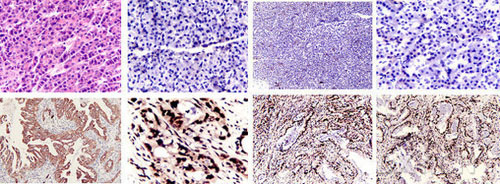
怎么做细胞爬片免疫组化染色实验
细胞爬片免疫组化染色,是通过细胞爬片是让玻片浸在细胞培养基内,细胞在玻片上生长,主要用于组织学,免疫组织化学...
2020/7/20 22:04:33
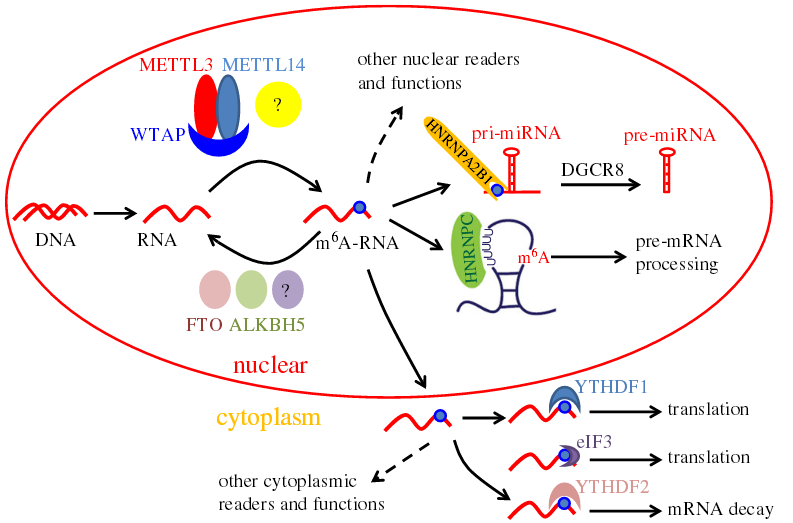
提取病毒RNA的实验方法
提取病毒RNA方法分别有:异硫氰酸胍的提取病毒RNA方法、TRIzol LS提取法、Trizol法提取法等等...
2020/7/22 20:29:26

9月开学季——助研新学期 范德送好礼
2025/8/28 15:30:55
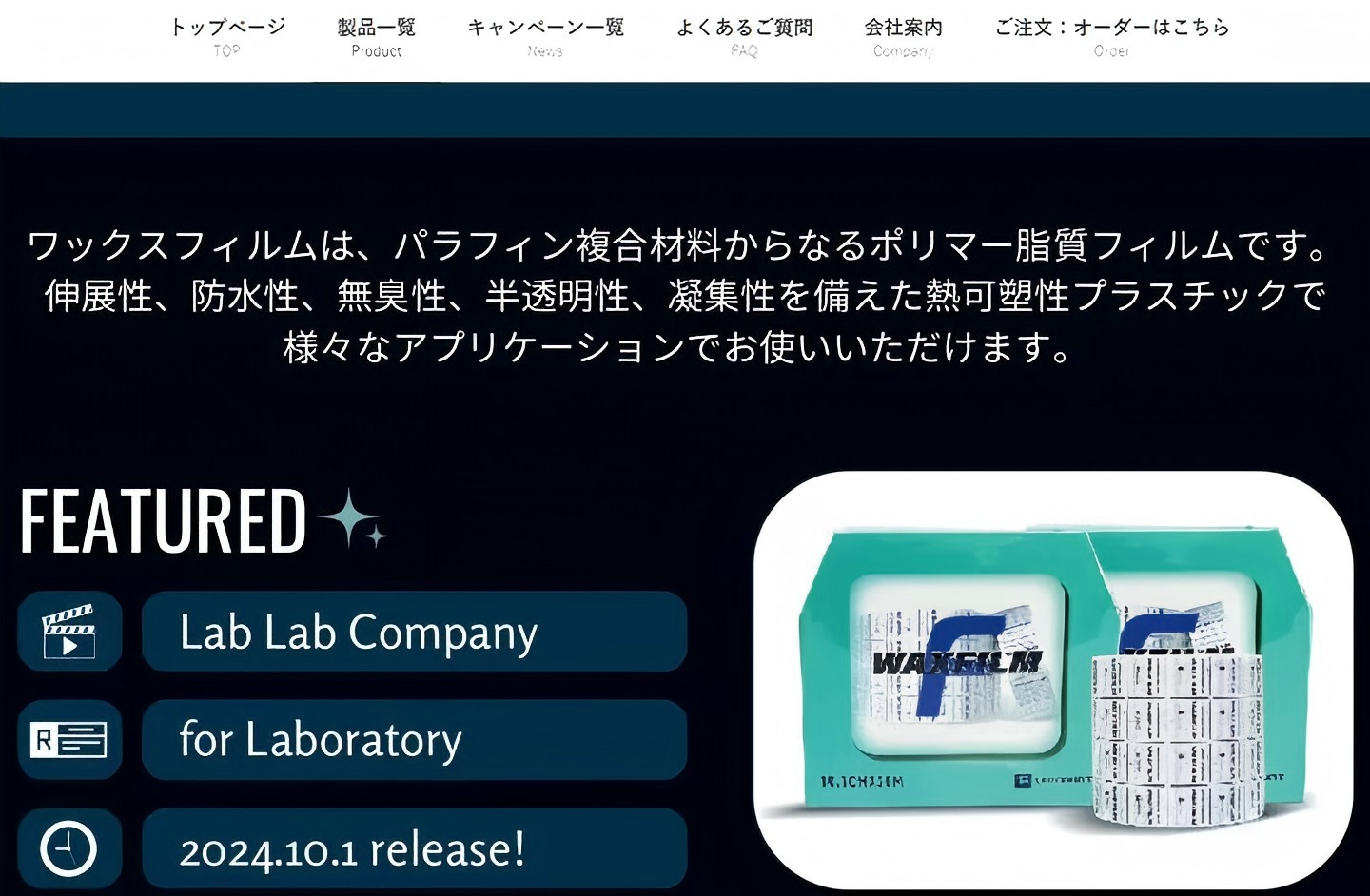
Waxfilm 实验室封口膜:技术与国际市场的双重突破
在实验室耗材领域,封口膜是保障实验准确性与稳定性的关键产品之一。近年来,Waxfilm?实验室封口膜凭借其卓...
2025/5/13 13:03:40
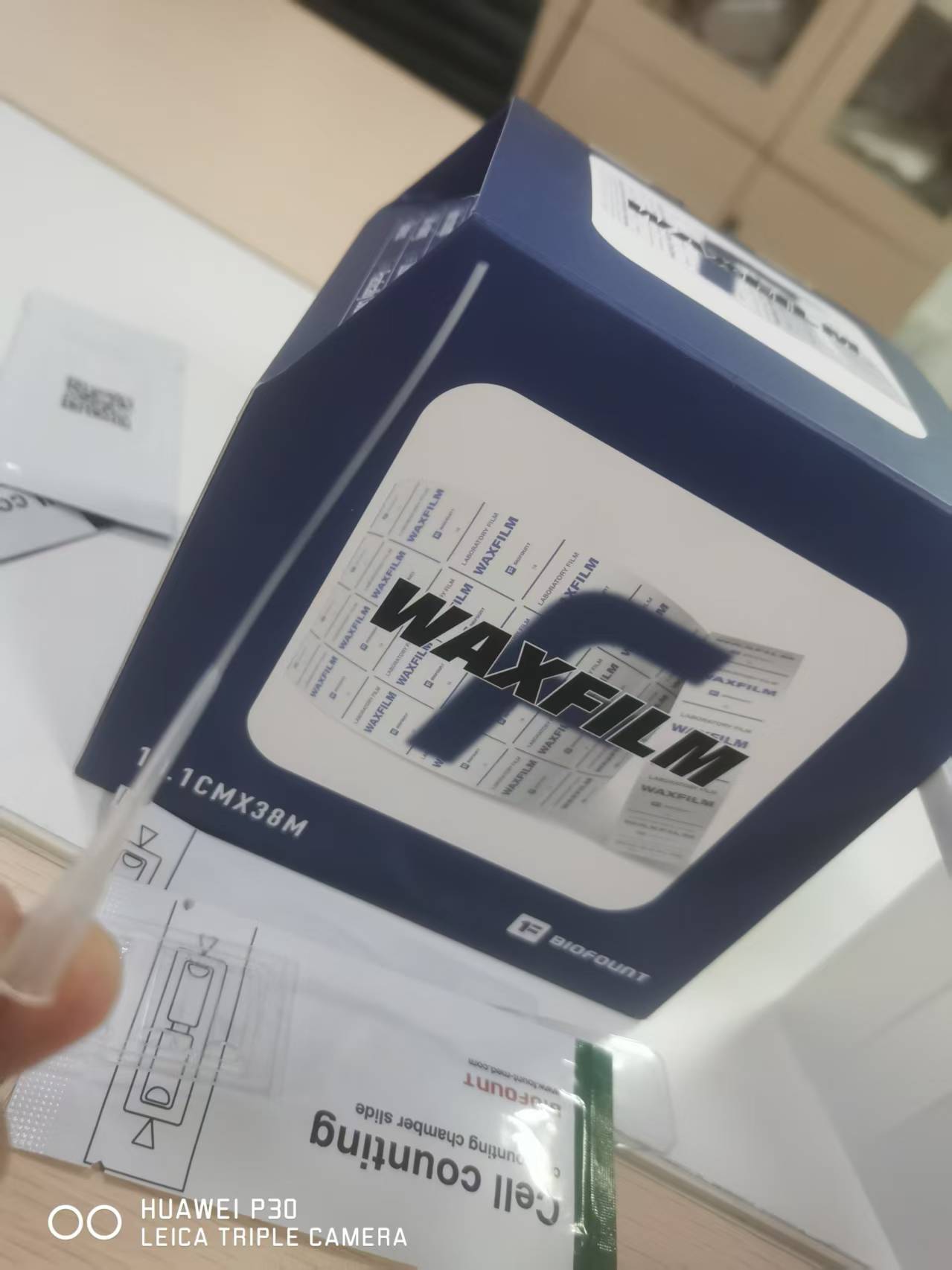
Waxfilm实验室封口膜的5大突破
Waxfilm实验室封口膜作为生物功能膜领域的国产技术突破和品牌突破,是生物领域中国技术发展的缩影。
2025/5/6 17:02:07
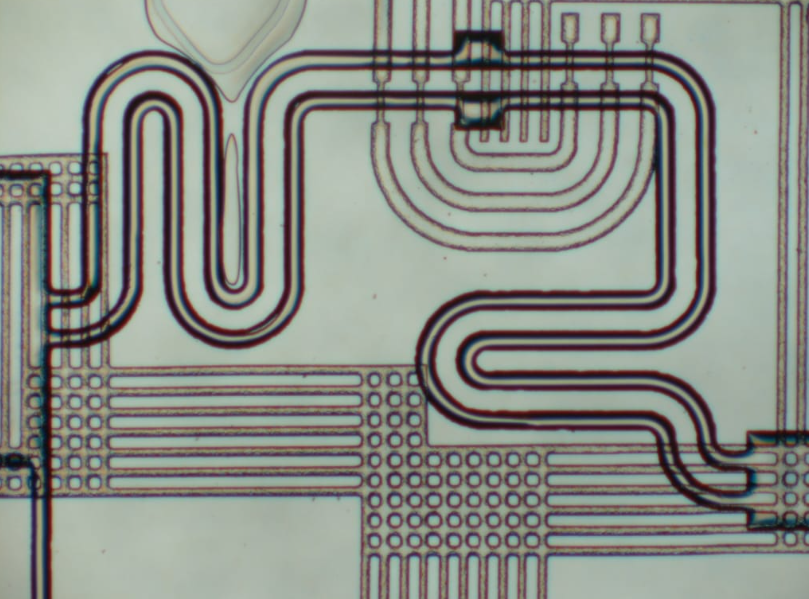
各种微流控芯片键合方法的优缺点
微流控芯片键合:目前主要有激光焊接、热压键合、胶键合、超音波焊接,每种方法都有各自的优缺点。本文主要介绍聚酯...
2023/7/28 10:43:09
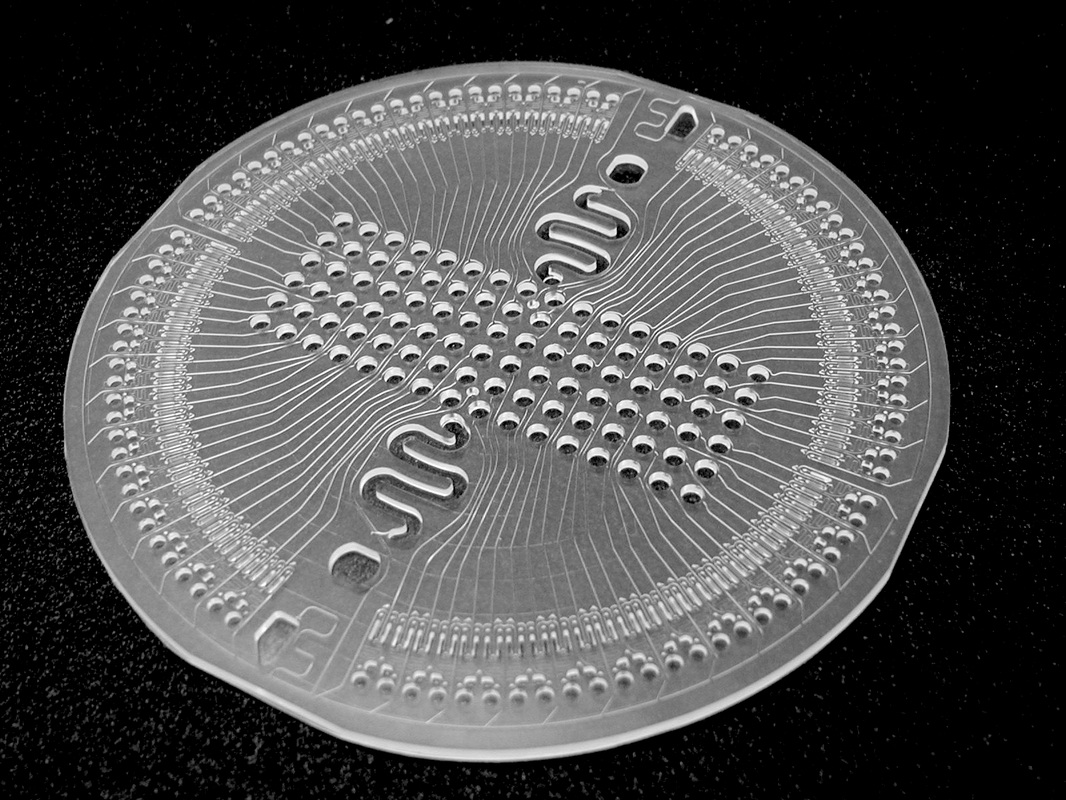
新一代微流控键合解决方案
微流控键合解决方案:微流控芯片制造的一个重要环节,也是最容易被忽视的--芯片键合。其中一个重要因素是:微流控...
2023/7/27 12:44:28
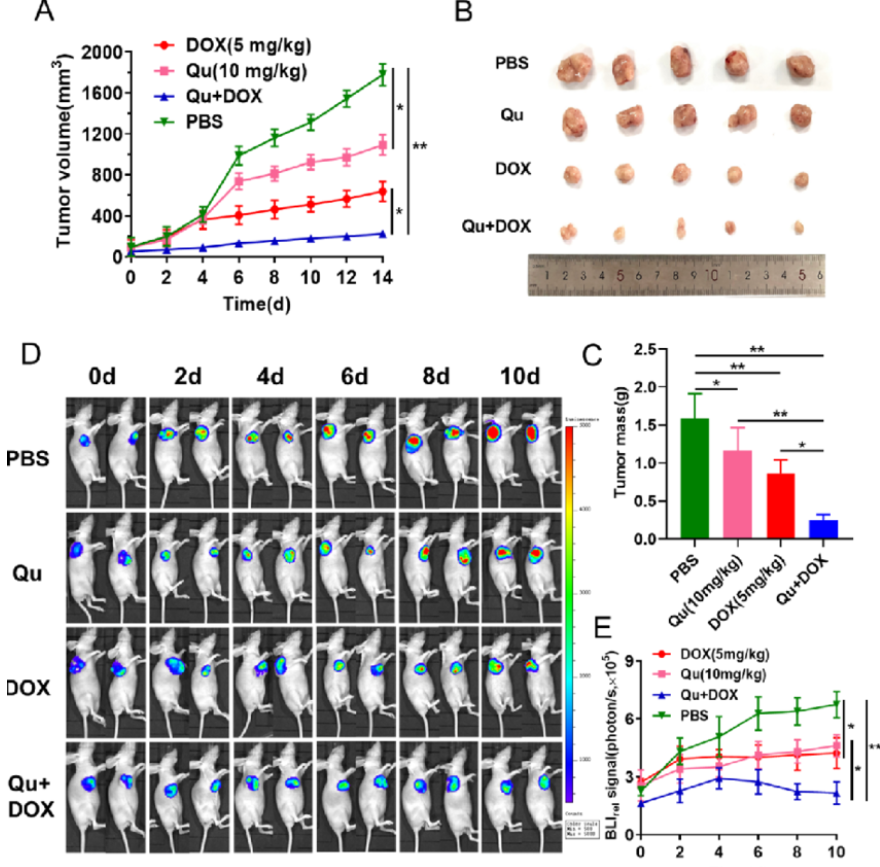
荧光素钾盐使用说明
D-荧光素钾盐(K+)设计用于体外和体内生物发光测定。D-荧光素的质量和纯度对于获得良好和可重复的结果至关重...
2023/7/20 11:05:11
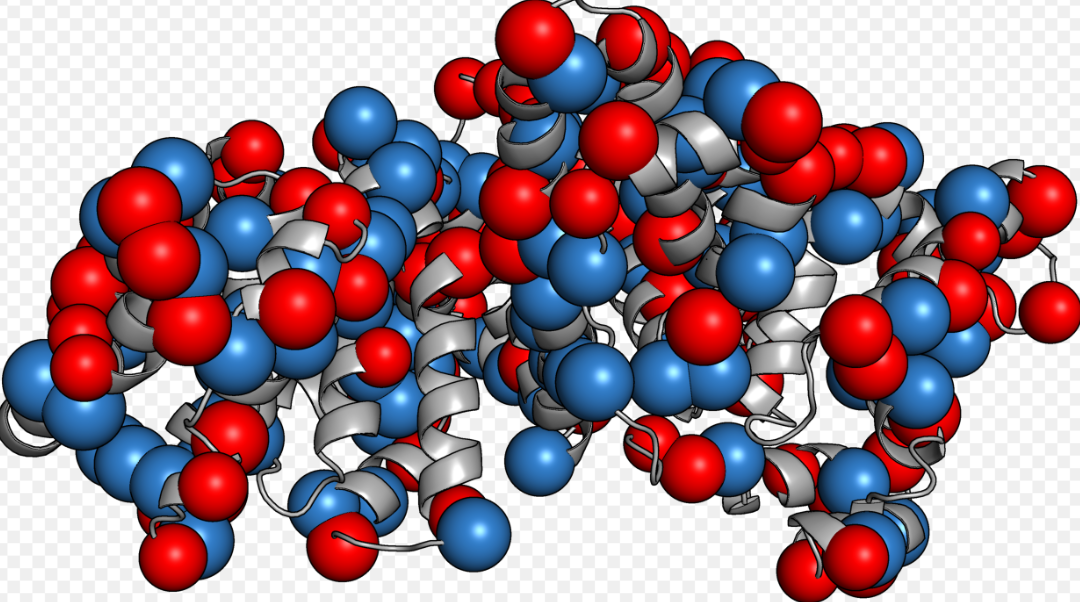
如何选BSA(牛血清白蛋白)
如何选BSA(牛血清白蛋白):牛血清白蛋白(BSA)有多种形式,如何选择适合自己的牛血清白蛋白(BSA)是一...
2023/2/14 13:09:18
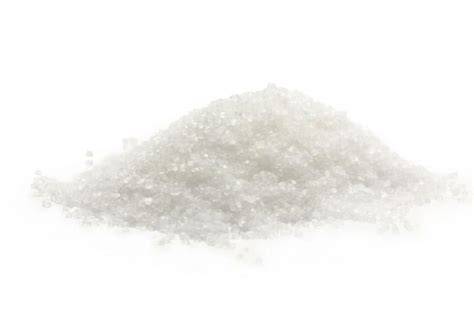
牛血清白蛋白(BSA)常见问题
牛血清白蛋白(BSA)常见问题:牛血清白蛋白(BSA)在实验室中是通用的,可用于蛋白质印迹、细胞组织培养、P...
2022/10/19 9:39:51




 购物车
购物车 



